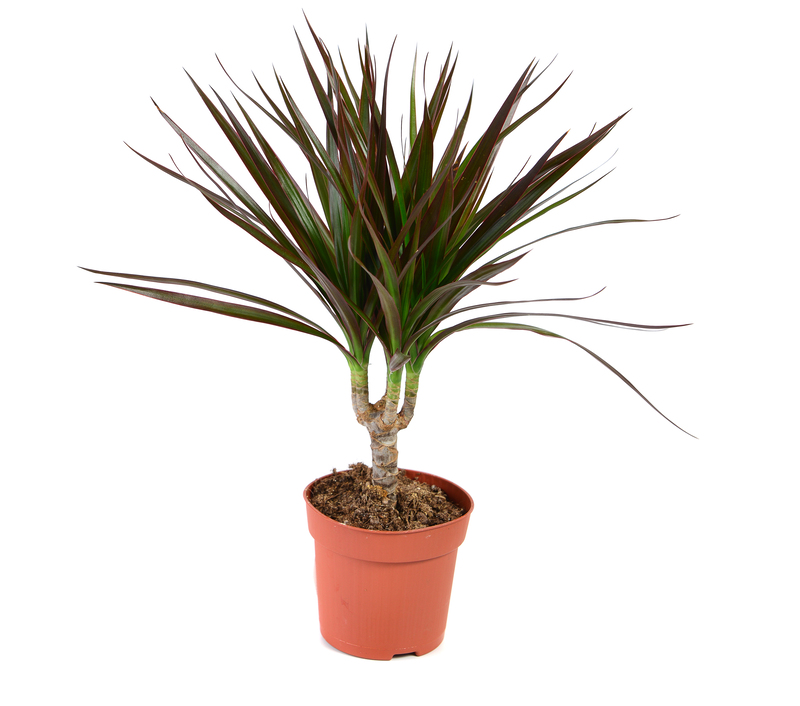Reclaiming Your Garden: The First Steps Toward Transformation
Posted on 23/09/2025
Reclaiming Your Garden: The First Steps Toward Transformation
Is your once-beautiful garden overgrown, neglected, or transformed into a jungle of weeds and brambles? Many homeowners find themselves overwhelmed at the thought of bringing their garden back to life. The journey to a vibrant, healthy, and welcoming outdoor space starts with a few simple--yet crucial--first steps. In this comprehensive guide, you'll learn practical strategies for reclaiming your garden, setting the foundation for successful transformation, and creating a flourishing sanctuary right outside your door.
Why Reclaiming Your Outdoor Space Matters
A thriving garden transformation is more than just an aesthetic upgrade. Restoring your garden provides numerous benefits, including mental health improvement, increased property value, a habitat for beneficial wildlife, and a personal sense of accomplishment. Taking the first steps toward garden rejuvenation can also reconnect you with nature, foster sustainability, and encourage outdoor activity for the whole family.
- Boosts mental well-being by reducing stress and anxiety
- Creates a space for relaxation and social gatherings
- Encourages physical activity through gardening tasks
- Supports biodiversity by attracting pollinators
- Enhances curb appeal and property value

Step 1: Assess the Current State of Your Garden
Before embarking on your garden reclamation journey, take time to assess the current condition of your space. Walk around your garden with a notepad and camera. Make a list of what you observe:
- Areas dominated by weeds or invasive species
- Existing healthy plants worth saving
- Damaged trees, shrubs, or flowerbeds
- Paths, boundaries, fences, and features in disrepair
- Sunny, shaded, dry, or damp spots
A thorough evaluation helps you understand your garden's strengths and weaknesses. Take photographs as "before" snapshots that will also serve as motivation during your garden transformation project.
Identify Your Garden's Unique Features
Every garden has its own microclimate, soil types, light levels, and unique challenges. Recognizing these characteristics makes it much easier to plan your next moves for restoring your outdoor space. Pay close attention to:
- Soil quality: Is it sandy, clay-heavy, acidic, or alkaline?
- Drainage: Are there waterlogged patches or dry, cracked areas?
- Sun exposure: Which areas receive full sun, partial sun, or deep shade?
- Existing hardscape: Are patios, paths, or structures sound or crumbling?
Step 2: Clear the Clutter and Start with a Fresh Canvas
The most daunting part of reclaiming a neglected garden often involves an initial clean-up. Approach the task in manageable sections to avoid overwhelm. Wear protective gloves and clothing, and arm yourself with essential tools: pruning shears, loppers, a rake, a sturdy spade, and a wheelbarrow.
Remove Rubbish and Debris
Begin by clearing all non-organic debris. Remove broken garden furniture, old pots, plastic, stones, and other rubbish. This instantly makes the space safer and allows you to see the bare bones of your garden.
Cull Weeds, Brambles, and Overgrowth
Address problem areas by tackling invasive weeds, overgrown shrubs, and tangled vines. Pull weeds by hand or use a hoe, taking care to pull up as much of the root system as possible to prevent rapid regrowth. Prune back brambles and wild growth, cutting at ground level if necessary.
- Attack invasive species first, such as bindweed, knotweed, or ivy
- Dispose of weeds safely--don't compost invasive plants, as they may resprout
- Bag green waste and organize a collection or compost healthy organic matter
Rescue and Revitalize
During your clean-up, look for resilient plants worth saving. Gently remove weeds and debris from around these specimens, prune away dead growth, and water deeply. Many perennials, shrubs, and even some trees can bounce back with a little TLC.
Step 3: Evaluate Structural Elements and Boundaries
A key part of garden renewal involves checking your boundaries and hard landscaping features. Neglected fences, crumbling walls, broken gates, and uneven paths not only look untidy but can also pose safety risks.
- Inspect fences and gates and make repairs or replacements where necessary
- Check for trip hazards on paths, patios, and decking areas
- Assess support for climbing plants--trellises or pergolas may need fixing
- Clear moss and lichen from paving stones and steps
Establish Boundaries
Even a wild garden benefits from clearly defined edges. Reclaim overgrown borders, reshape beds, and re-edge lawns to create structure and flow. Use string lines and stakes to mark curves or straight lines for a professional look.
Step 4: Test and Enrich Your Soil
Healthy soil is the most important ingredient for a thriving, transformed garden. After initial clearance, test your soil to better understand its composition and fertility. Simple soil test kits are widely available and will tell you the pH level (acidic or alkaline) and major nutrient deficiencies.
- Add compost or well-rotted manure for organic enrichment
- Mulch bare soil to improve moisture retention and suppress weeds
- Consider soil amendments (lime for acidity, sand for heavy clay)
- Use green manures like clover or vetch to add nutrients naturally
Step 5: Plan for the Future--Creating Your Garden Vision
With the initial clearing and assessment complete, now is the perfect time to consider what you want to achieve with your garden makeover. Take inspiration from gardens you admire, gardening magazines, or online resources. Imagine how you want to use your renewed outdoor space.
Define Your Needs and Preferences
- Do you want a wildlife-friendly haven, vegetable beds, or a family play area?
- Will your garden host barbecues, relaxation zones, or a pond?
- Are you aiming for low-maintenance or are you happy to invest time in upkeep?
- What color schemes, styles, or themes reflect your personality?
Sketch a basic plan or mood board to visualize your garden's potential. Don't worry about perfection--these ideas will help guide you as you move forward.
Step 6: Prioritize and Set Realistic Goals
Transforming a garden is a big undertaking, so it's wise to break down the process into achievable stages. List your priorities: tackling invasive weeds, installing new beds, repairing paths, or planting a new hedge. Set realistic timelines for each stage.
- Start with urgent repairs and structural tasks
- Follow with soil improvement and bed preparation
- Next, focus on planting and introducing new features
- Regularly schedule maintenance to prevent future neglect
Step 7: Assemble Your Toolkit
A reclaimed garden is built on the right tools and materials. Don't rush to buy a whole arsenal immediately--begin with the basics and add to your toolkit as you identify needs. Essential equipment includes:
- Spade, fork, and hand trowel
- Pruning shears and loppers
- Hoe and rake
- Watering can or hose
- Wheelbarrow for moving debris
- Protective gloves and gardening boots
Over time, consider adding kneeling pads, compost bins, rain barrels, and specialist equipment like soil testers or edging shears. Well-chosen tools make the gardening experience safer, more efficient, and much more enjoyable.
The Joys of the First Steps--Setting Yourself Up for Success
Reclaiming your garden is a journey filled with opportunity and learning. While the initial stages can be physically demanding, each bag of weeds removed and each patch of soil revived is a small victory. Celebrate the transformation process, noticing the incremental changes and thinking about the lush, beautiful landscape that will emerge.
Tips for Maintaining Motivation:
- Break big tasks into hourly or daily chunks
- Recruit help from friends or family--make a day of it!
- Listen to music or podcasts as you work
- Keep a photo diary of your progress and milestones
- Reward yourself with a treat after every session
Remember, every garden--no matter how neglected--can be restored and transformed. With patience, planning, and consistent effort, your outdoor space will become the inviting haven you dream of.
Common Challenges and How to Overcome Them
It's normal to face obstacles during a garden restoration project. Here are a few frequent challenges and how to tackle them:
- Heavy clay or sandy soils: Amend with compost, grit, or organic matter to improve texture.
- Persistent weeds: Use thick mulch or weed-suppressing fabric after initial clearance.
- Shade issues: Select shade-tolerant planting or thin out tree branches to let more light in.
- Budget restrictions: Upcycle materials, propagate plants from cuttings, or join local plant swaps.
- Lack of time: Focus on one small area each weekend to see steady progress.

Looking Ahead--The Next Steps After Reclamation
Once the first phase of reclaiming your garden is complete, you're ready to move on to more creative and rewarding stages:
- Designing paths, beds, and focal points
- Choosing new plants for your preferred style and conditions
- Building features, like raised beds, wildlife habitats, or water elements
- Planning year-round interest with bulbs, perennials, and evergreens
- Installing efficient irrigation and sustainable garden practices
Each step will bring you closer to a thriving, sustainable, and highly personal outdoor oasis.
Final Thoughts: Your Garden Reclamation Begins Today
Embarking on the journey of garden transformation is about more than physical work--it's a process of reclaiming creativity, pride, and connection with nature. These first steps--assessment, clearing, repairing, enriching, and planning--lay the essential groundwork for years of enjoyment and growth. Whether you dream of a cottage-style border, a productive urban vegetable patch, or a serene modern retreat, reclaiming your garden starts here.
With each weed you pull and every patch you revive, you're not just transforming your garden--you're transforming your relationship with your home and the natural world. So put on your gloves, grab your spade, and begin your garden reclamation adventure today. You'll be amazed by what's possible.

